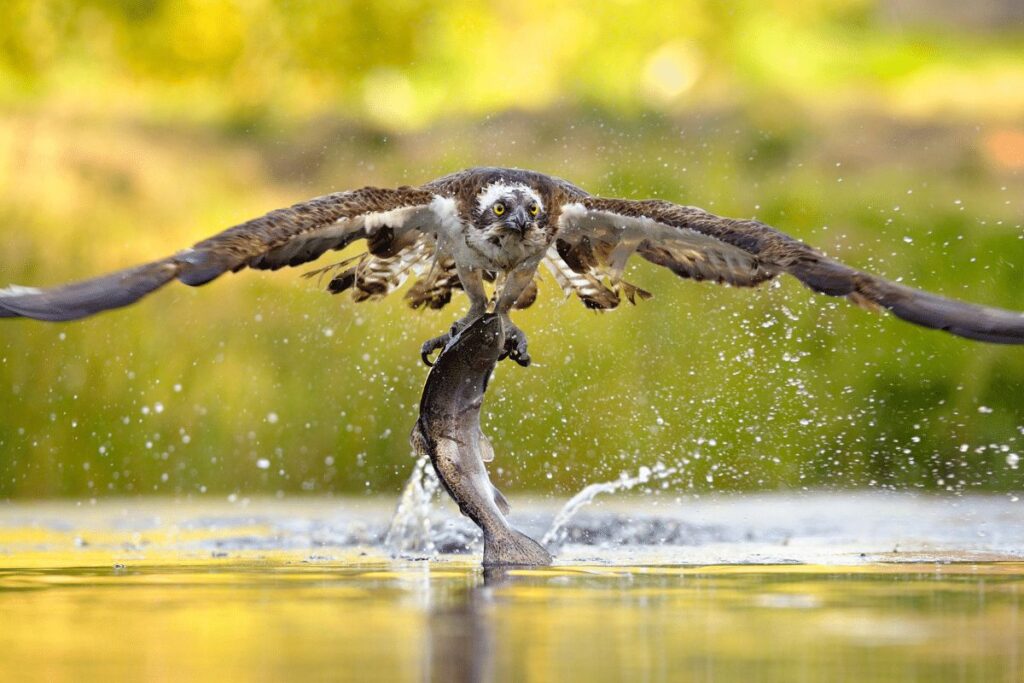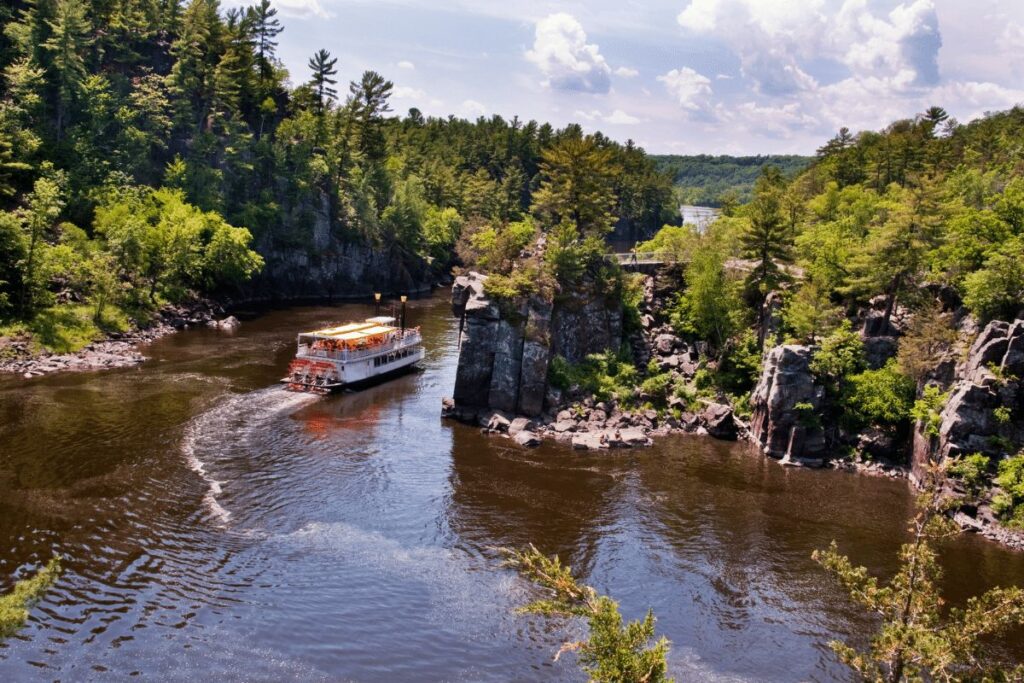Explore 15 Animals in the St.Croix State Park with our vivid hike recaps and photos!
St. Croix State Park is a wildlife enthusiast’s dream, where the animals are the stars of the show. Picture a serene encounter with a white-tailed deer or the silent flight of a bald eagle above.
This park is not just a backdrop for nature; it’s a living, breathing community of Minnesota’s most charismatic fauna.
Our recent excursions led us through the whispering pines and along the river’s edge, bringing us face-to-whisker with 15 incredible species. From the industrious beavers to the stealthy bobcats, each animal added a thrilling chapter to our hiking tale.
We’re here to share these moments with you, with snapshots and stories of each encounter. So come along on this wild journey and meet the eclectic inhabitants of St. Croix State Park—no binoculars needed!
White-tailed deer
There are many different animals that call St. Croix State Park home. One of the most common, and most popular, animals is the white-tailed deer.
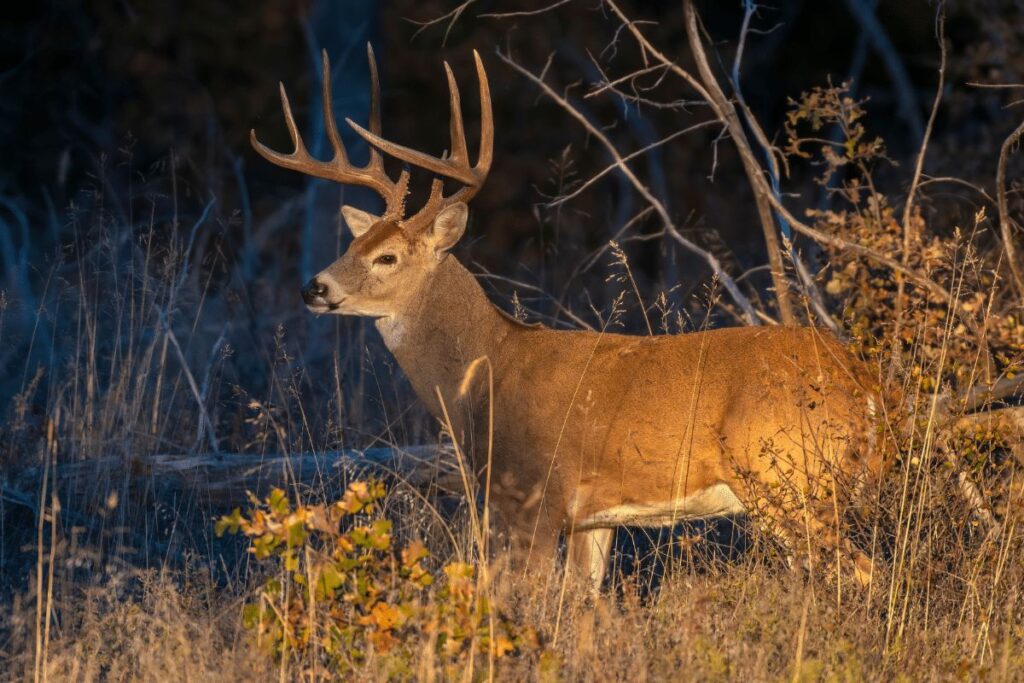
The white-tailed deer is a North American mammal of the family Cervidae. The white-tailed deer get their name from the long white hair on their tail. Male deer are called bucks, females are called does, and young deer are called fawns. A group of deer is called a herd.
White-tailed deer are herbivores and eat mostly plants. They will also eat acorns, nuts, berries, and grasses. In the winter, when food is scarce, they will also eat twigs and bark.
White-tailed deer are very good at running and can reach speeds of up to 30 miles per hour! They can also jump very high, up to 10 feet in the air! When they feel threatened or scared, they will raise their tail up in the air so that the white fur shows. This is a warning signal to other deer that there is danger nearby.
If you’re lucky enough to see a white-tailed deer while you’re hiking in St. Croix State Park, be sure to admire it from a distance and give it plenty of space. These beautiful animals are an important part of our ecosystem and we should do our best to protect them!
Black bears
Black bears are the largest land carnivores in North America and can be found throughout the St. Croix State Park. These animals are very rarely seen and usually prefer to avoid humans.
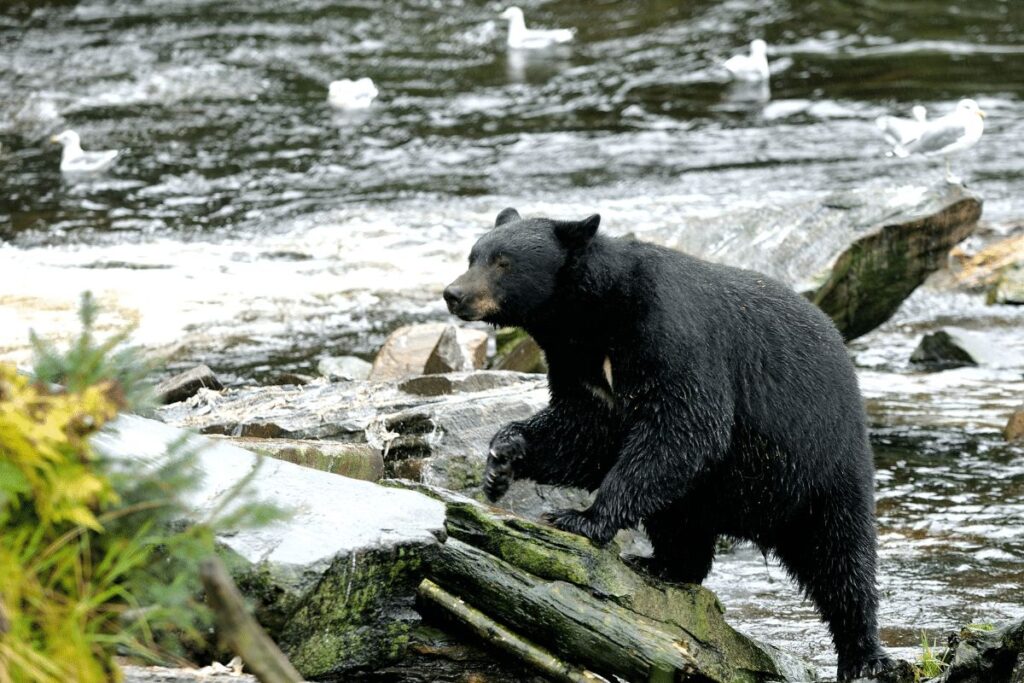
They are omnivores, meaning they eat both plant and animal matter, including fruits, nuts, insects, small mammals and carrion. Black bears can be active day or night but tend to be most active at dawn and dusk. To help protect these animals from harm, visitors should never feed or approach them.
Gray Foxes
Gray foxes are canids that are native to North and South America. The most notable feature of gray foxes is their ability to climb trees! In fact, they are the only canid in North America that can do so. Gray foxes are also known for their distinctively colored fur.
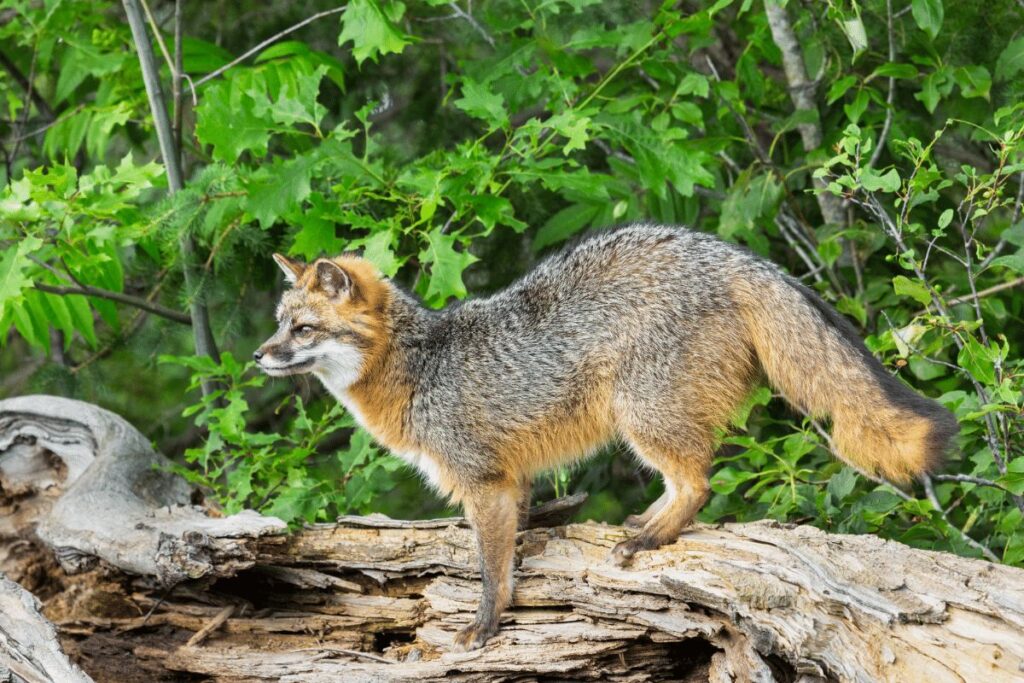
Their coats can range in color from a light gray to a dark brown or black.
Gray foxes typically weigh between 8 and 15 pounds, with males being larger than females. They have a body length of anywhere from 24 to 30 inches, and a tail length of 12 to 16 inches.
Gray foxes typically live between 2 and 6 years in the wild, although captive individuals have been known to live much longer.
Red foxes
Red foxes are one of the most commonly seen animals in the St. Croix State Park. They are small to medium-sized mammals with long, slender legs, and a reddish coat. The tips of their tails are usually white, and they have black fur on their feet and lower legs.
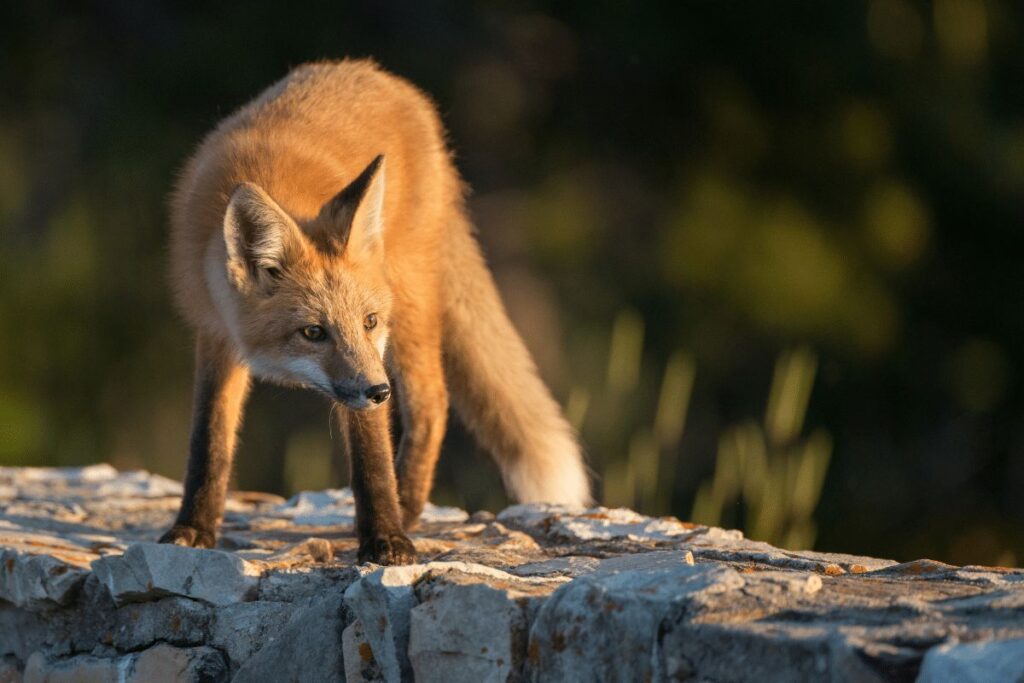
Red foxes are very curious animals, and will often approach hikers to see what they’re up to. If you’re lucky, you may even see a red fox playing with its young.
Beavers
Beavers are one of the most well-known animals in North America, and they’re also present in the St. Croix State Park! These rodents are known for their dam-building abilities, and they play an important role in the ecosystem by creating homes for other animals and providing food and water sources.
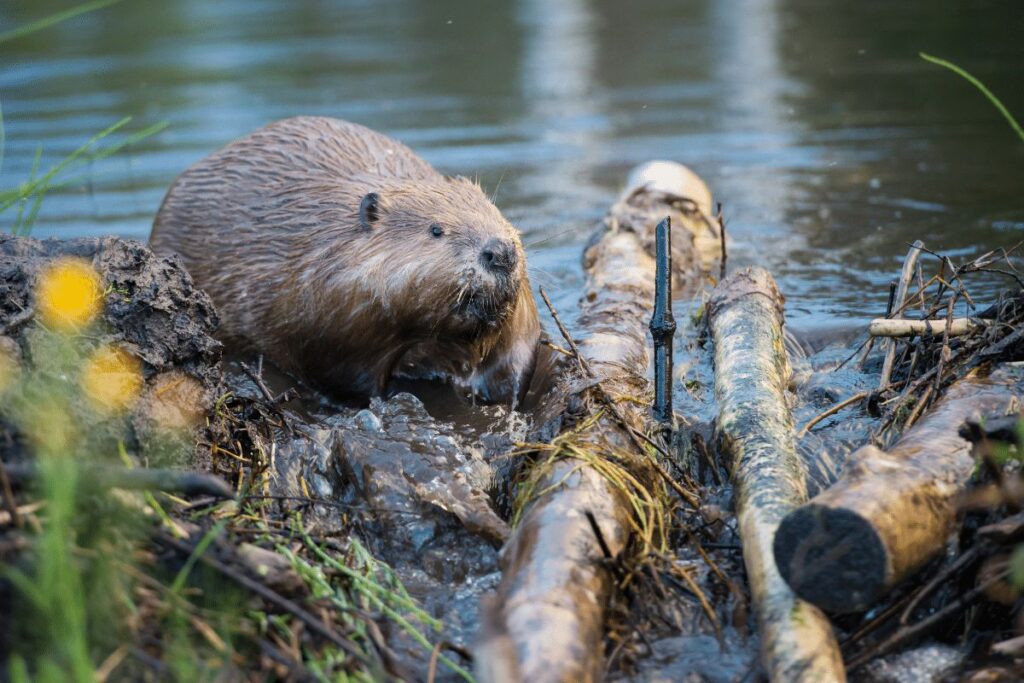
Beavers are nocturnal creatures, so you’re most likely to see them at dawn or dusk. If you’re lucky enough to spot a beaver while hiking in the park, be sure to give it plenty of space and watch from a distance.
Osprey
Osprey have often be seen flying over the water or perched in trees. They typically eat fish, but will also eat other small animals if given the chance. Osprey are large birds with a wingspan of up to 6 feet, and they have distinctive white heads and bellies with dark brown wings.
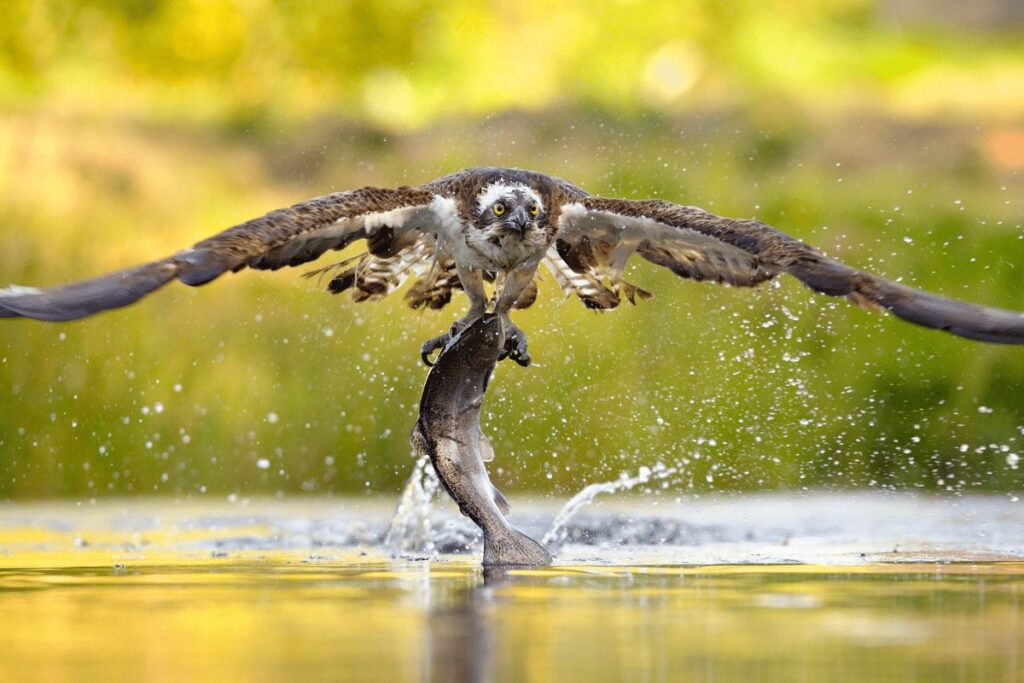
Osprey are part of the hawk family, and they can often be seen soaring above the lake in search of prey. They use their sharp talons to snatch fish from the water, and they will also dive into the lake to catch them.
Osprey are also very social birds, and they often form large colonies on trees or other structures near water. These birds mate for life and will return to the same nesting sites each year.
Ospreys play an important role in the ecosystem of St. Croix State Park by keeping populations of certain species of fish in check, helping to keep them from becoming overpopulated. This helps maintain a healthy balance of wildlife in the park that benefits both birds and humans alike.
Bobcats
Bobcats are a common sight in the St. Croix State Park. They are typically nocturnal animals, but can be seen during the day if they are hunting or searching for food. Bobcats are solitary animals, except for mothers with kittens or during the mating season.
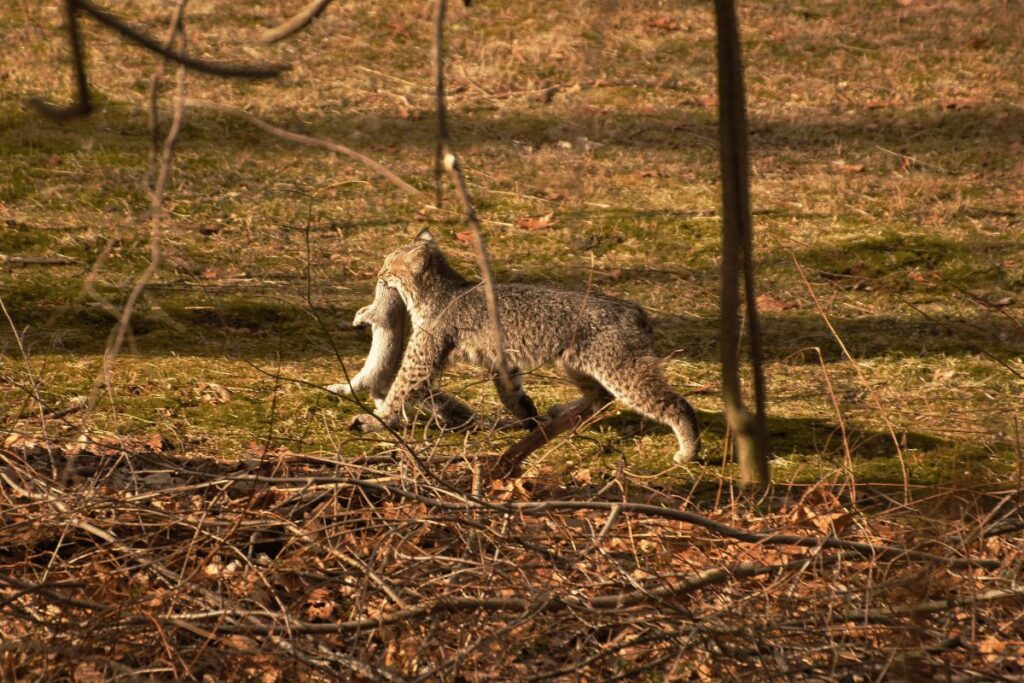
Males and females will often meet up to mate, but will live apart otherwise. Females will have a litter of 1-6 kittens and will care for them until they are old enough to fend for themselves, which is typically around 6 months old.
Bobcats have a wide diet and will hunt small animals such as rabbits, birds, and reptiles. They are also known to eat carrion and fruits.
Although bobcats are relatively common in St. Croix State Park, they can be difficult to spot due to their excellent camouflage and tendency to hunt at night. If you do happen to see one, keep your distance as they are wild animals that should not be approached or handled.
Timberwolves
The St. Croix State Park is home to a wide variety of animals, including the majestic timberwolf. These wolves are a sight to behold, and we were lucky enough to see a few while hiking through the park.
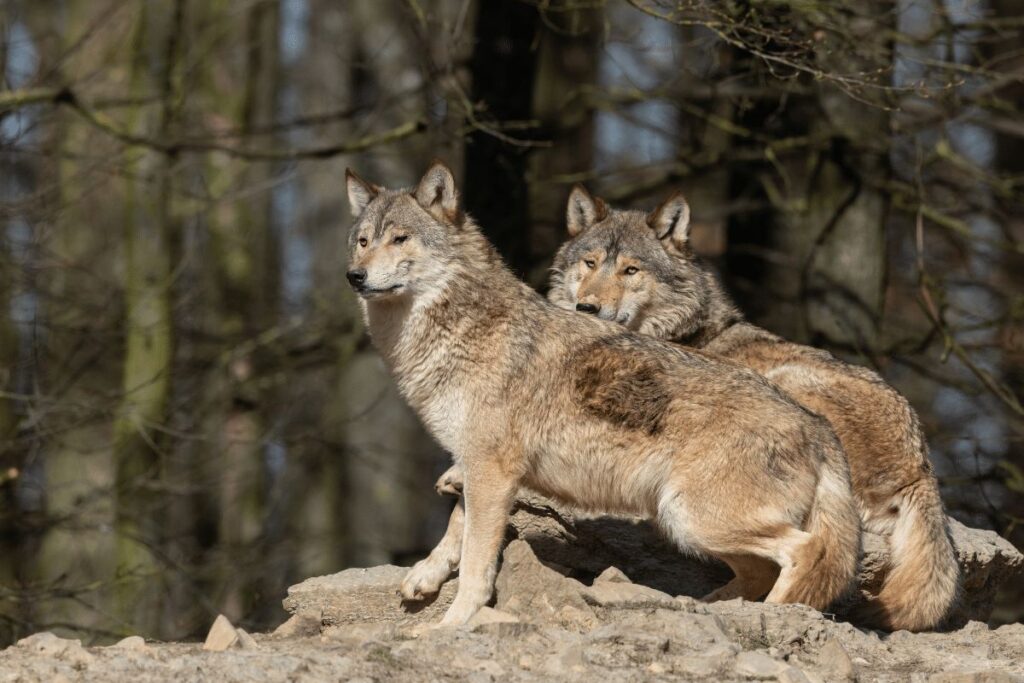
The timberwolf is the largest member of the canid family, and they are an apex predator in North America. These wolves are shy and elusive, but they are also fascinating creatures. We encourage you to keep your eyes peeled for them on your next hike through the St. Croix State Park!
If you do happen to spot a timberwolf, make sure to keep your distance and never approach it. These animals can be dangerous if provoked, so it is important to remember that they are wild animals.
It is also important not to feed them or leave food out for them, as this can cause them to become dependent on humans for food. Be sure to respect their habitat and never try to touch or harass them in any way.
Ruffed grouse
As we hiked through the St. Croix State Park, we were lucky enough to see a wide variety of animals! One of the most exciting was the ruffed grouse.
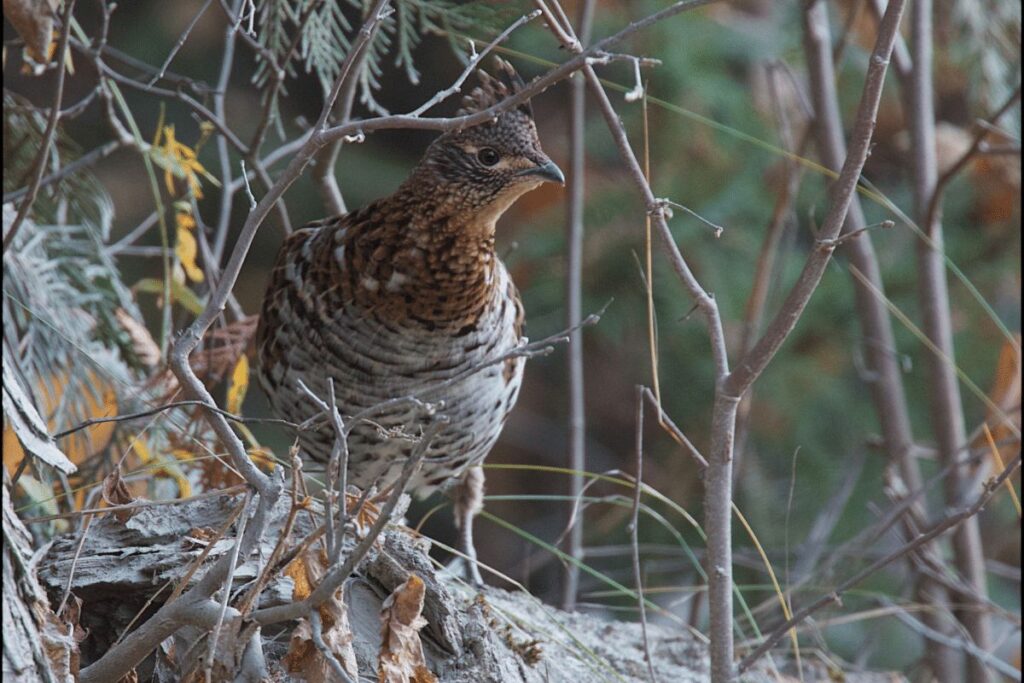
The ruffed grouse is a medium-sized bird that is found in North America. It has a brown body with black feathers on its back and tail. The male has a distinctive ruff of feathers around its neck, which gives it its name.
The ruffed grouse is known for its loud drumming sound, which it uses to attract mates and defend its territory. It is also an excellent flyer, able to reach speeds of up to 60 miles per hour!
If you’re lucky enough to see a ruffed grouse while you’re hiking, be sure to enjoy the moment – they are truly magnificent creatures!
Flycatcher
One of the animals we saw while hiking in the St. Croix State Park was a flycatcher. This little bird was perched atop a tree branch, flitting about and catching insects in mid-air. It was a beautiful sight to behold!
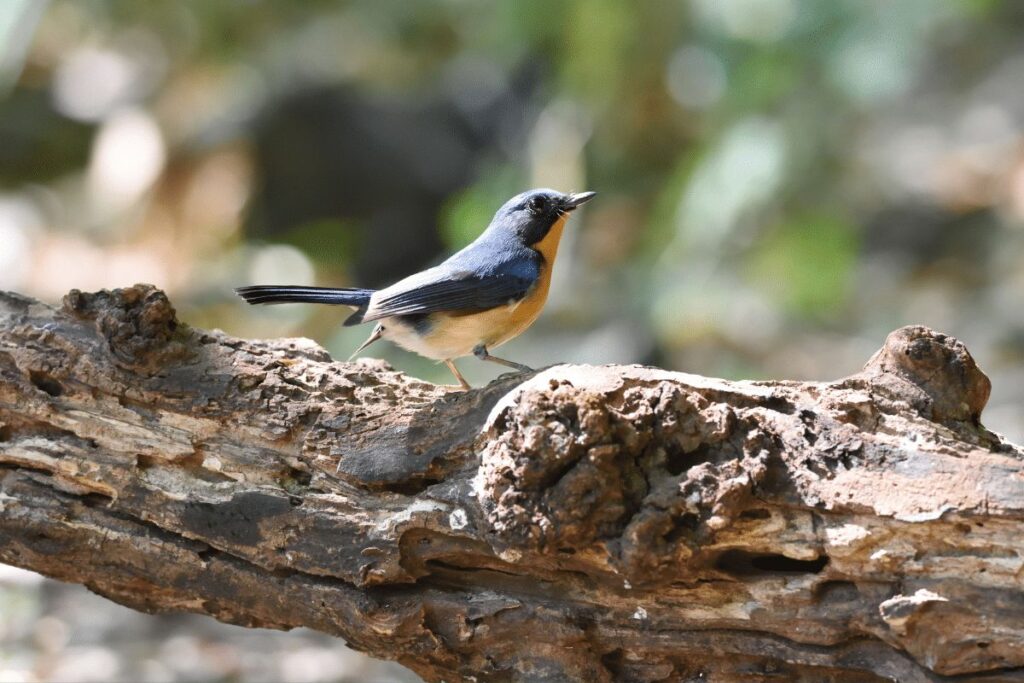
Flycatchers are typically grayish or brownish in color, with a long bill. They have a unique way of catching insects, which is why they are given the name. Rather than hunting for food like other birds do, flycatchers wait for their prey to fly by and snatch it up in mid-air.
These birds can be found all over the world, especially in North and South America. They breed throughout the year and often make their homes in wooded areas near wetlands or rivers. Flycatchers usually feed on small flying insects such as flies, mosquitoes, moths and bees.
Flycatchers play an important role in controlling insect populations, as they help keep these pests at bay. If you’re ever out hiking again, keep an eye out for these active little birds and enjoy watching them catch their meals!
Bald eagle
The St. Croix State Park is home to a wide variety of animals, including the bald eagle. We were lucky enough to spot a bald eagle while we were hiking! The bald eagle is a large bird of prey, with a wingspan of up to 7 feet.
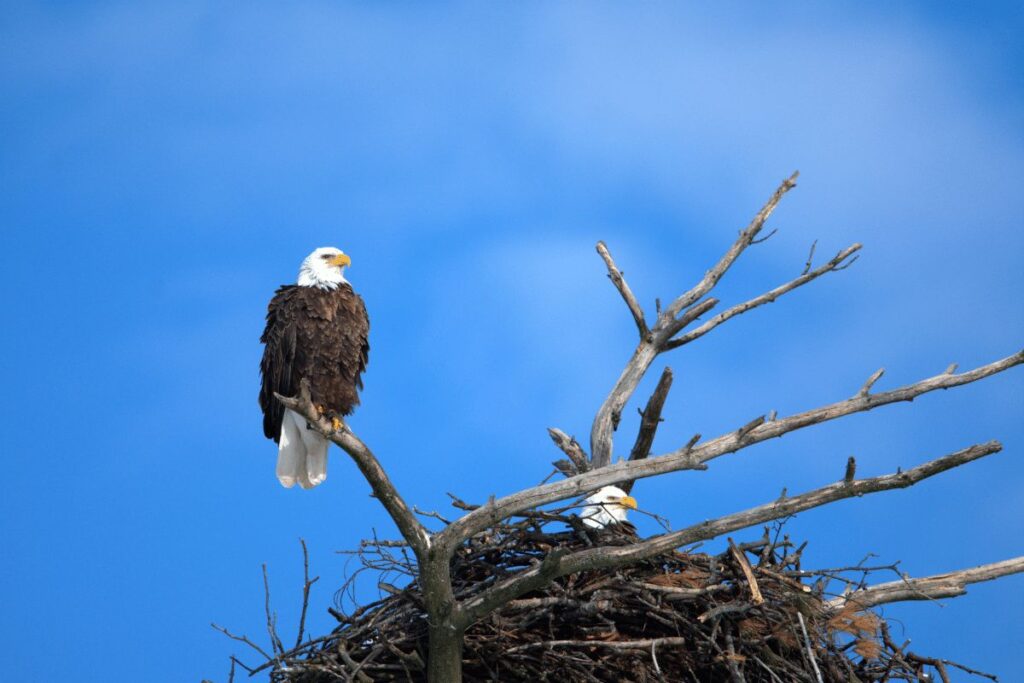
They are found in North America and are most commonly found near bodies of water. Bald eagles are known for their distinctive white head and tail, which make them easy to spot in the wild.
Bald eagles are apex predators and feed on a variety of prey, including fish, small mammals, reptiles, and birds. They build large nests made of sticks high up in trees to lay their eggs. The bald eagle has been the national symbol of the United States since 1782.
They are considered an endangered species in some parts of their range, although they have made a strong comeback in recent years due to conservation efforts.
Coyotes
Coyotes are one of the most commonly seen animals in the St. Croix State Park. They are relatively small, but can be fierce predators. Coyotes usually hunt in pairs or small groups, and will often travel long distances to find food.
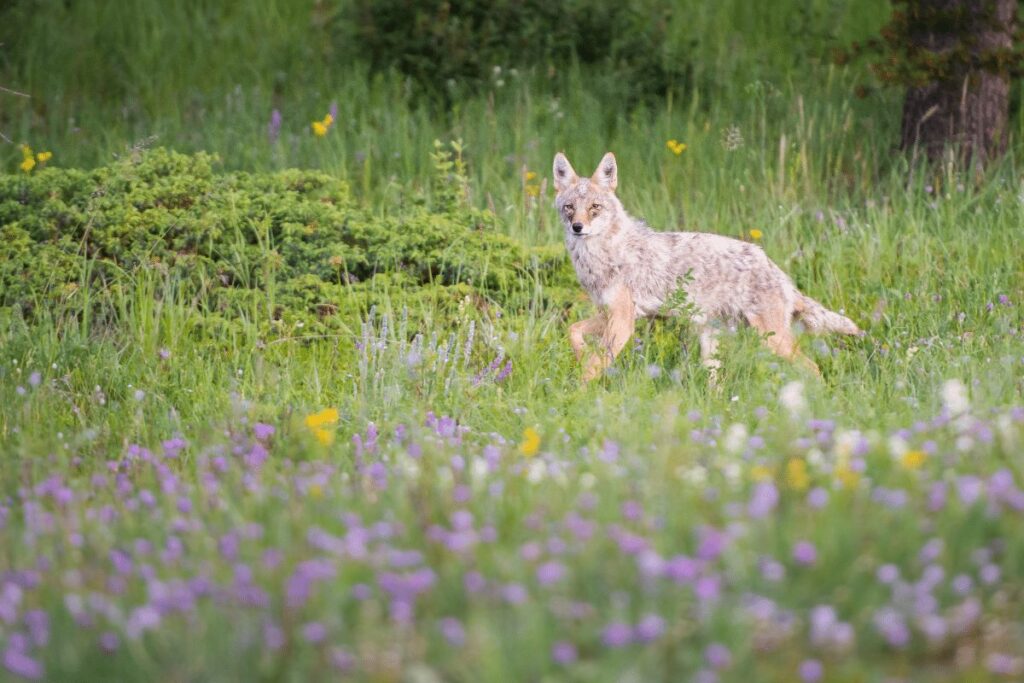
While hiking in the park, be sure to keep an eye out for coyotes! If you see one, do not approach it. Instead, make yourself as big as possible and make loud noises to scare it away.
Warbler
The St. Croix State Park is home to a variety of different animals, including the warbler. This small songbird is a common sight in the park and can be heard singing its cheerful tune throughout the day. The warbler is a timid bird that is easily frightened, so it is important to keep your distance if you see one.
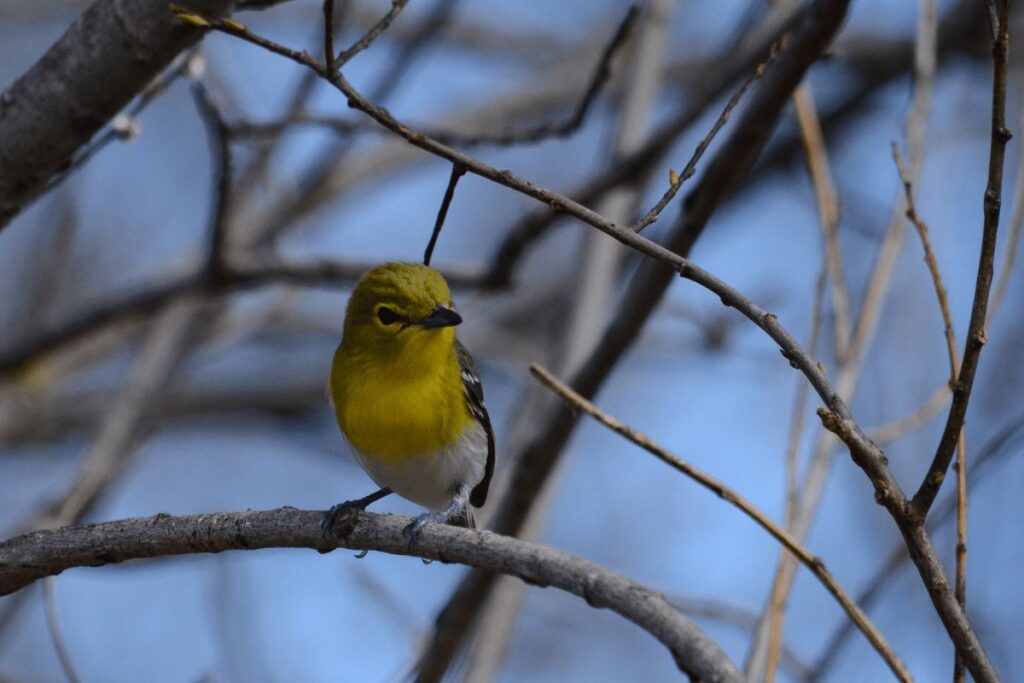
The warbler is a small bird with striped coloring, usually bright yellow and gray. Its bill is quite thin and pointed, making it an efficient insect eater. They mainly feed on insects such as caterpillars, grasshoppers, and crickets that they find in the trees or on the ground.
Warblers also enjoy eating fruit and sometimes visit backyard birdfeeders to get a snack.
The St. Croix State Park warbler can be seen throughout the summer months when they breed in the park’s trees. During this time males will sing their distinctive song to attract mates and declare their territory.
Females build cup-shaped nests out of twigs, grasses, and other materials high up in a tree where they lay three to five eggs at a time. The female alone incubates them for two weeks before they hatch into fluffy little chicks that are ready to explore their new home.
Raccoons
Raccoons are interesting creatures that are often seen in the St. Croix State Park. They are nocturnal animals, so they are most active at night. Raccoons are omnivores, which means that they eat both plants and animals.
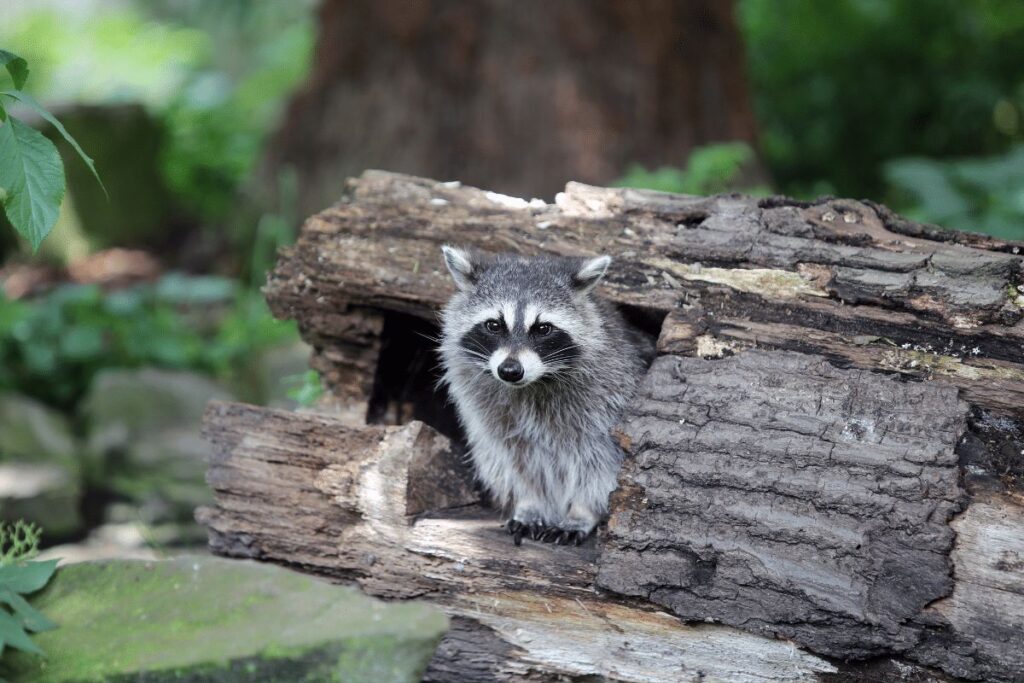
They have sharp claws that help them climb trees and get into trash cans! If you see a raccoon in the wild, it is best to leave it alone and not try to pet it.
Raccoons are also known for their intelligence. They can solve puzzles, remember solutions to problems, and recognize patterns. In addition, studies have shown that raccoons can even be trained to use tools!
It is important to remember that if you see a raccoon in the wild, it is best to leave it alone and not try to approach it.
Barred owl
The barred owl is a beautiful bird that can be found in the St. Croix State Park. This owl has brown and white striped plumage, with yellow eyes. It can be seen perching in trees or flying overhead in search of prey. The barred owl is a carnivore, and its diet consists of small mammals, birds, and reptiles.
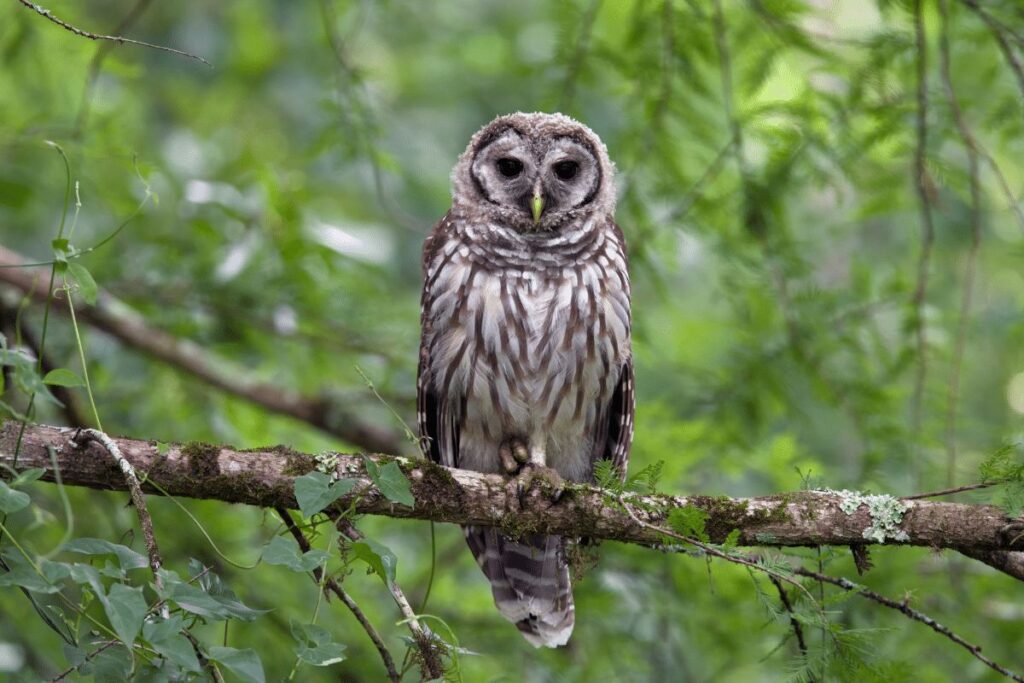
The barred owl lives in a variety of habitats, including old-growth forests, swamps, and other wetlands. It is also found in suburban neighborhoods. The barred owl is not migratory and will stay in the same area year-round.
The barred owl is an incredibly well-adapted predator and hunts mainly at night using its excellent hearing to locate prey. Its diet consists mainly of small mammals such as mice, voles, squirrels, rabbits, and shrews. They have even been known to feed on frogs and lizards.
The barred owl has a very distinctive call that consists of six different hoots and can be heard up to a mile away. This type of owl does not build nests but instead uses abandoned nests built by other birds or takes over cavities created by woodpeckers or other animals.
The female lays 2-4 eggs in April or May and the young leave the nest after about four weeks with their parents remaining nearby for protection until they are able to hunt on their own.
The barred owl can be seen as a very intelligent hunter that plays an important role in controlling rodent populations around its habitat. Although it does not pose any direct threat to humans it should still be respected.
Also Read: St. Croix State Park: 7 Reasons To Explore! (Camping And Hiking Included)
Conclusion
Exploring the natural beauty of St. Croix State Park was a truly unforgettable experience, as we encountered some amazing animals along the way! It was amazing to see so many different species in one place and it’s clear that this park is an important habitat for wildlife.
We had a great time hiking through the park and watching these creatures living out their daily lives in their natural environment – it’s something that everyone should do at least once!

